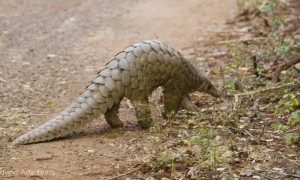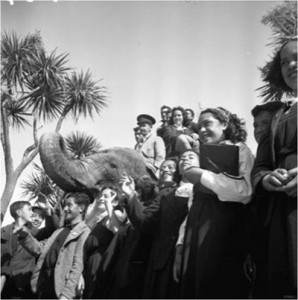Registered with the Registrar of Newspapers for India under R.N.I 53640/91
Vol. XXVI No. 08, August 1-15, 2016
A dose of nature for urbanites
by Shobha Menon
the Zoo Story… Part V
In 2000, a Zoo School was opened to educate the general public and students about wildlife and its conservation. Records show that by 2012-13, 204 programmes had been conducted to connect to 22, 230 students from across Tamil Nadu.
Visitors are screened and separated politely from all plastic. Littering is an offence, even ‘liable for imprisonment’! A website www.aazoopark and illustrative zoo guides add value. Deputy Director, K. Sudhagar confirms, “More species are planned to be added on – the rhino, king cobra and binturong. Environment enrichment activities that provide stimulated conditions of animal and bird habitats are an exclusive focus three days in a week.”
Says Zoo Director, KSVVP Reddy, I.F.S, “The aim of the park is the offsite conservation propagation of critically endangered species, wildlife education and wildlife research. The first Population Habitat Viability Analysis (PHVA) workshop held in 1993, was followed by planned breeding of the Lion- tailed Macaque (LTM), and genetic management of the species. The AAZP is currently the Coordinating Zoo for the conservation breeding of the LTM!”
Successful captive breeding programmes also include Nilgiri langur, Indian rock python, Bengal tiger, Indian gaur, wild dog, Indian peafowl, jackal, and ostriches! Wildlife biologist A Manimozhi affirms, “Animal exchange programmes have been part and parcel of zoo management programmes, for purpose of infusion of new blood line or pairing of a single animal. However many formalities have to be cleared before the actual exchanges happen, either from within India or internationally.” With a well equipped veterinary hospital from 1985, the AAZP is currently the only zoo in country with three full-time vets and biologists! It is also the only one in South India (of the seven across India) certified as a Centre of Excellence by the CZA.
“For a zoo to be dynamic, there must be a visible assemblage of popular species, more labour, animal feed, and regular maintenance. Awareness creation needs to be sustained and people oriented. Entrance rates will need to be increased from the current Rs 30”, an official feels. In the Mysore and Hyderabad Zoos, the entrance fee is currently around Rs 100,” he adds.
Zoo critics may disagree but the fact remains that zoos are now considered centres whom, apart from recreation, have specific objectives focused on education, scientific research and conservation. For many urban dwellers, zoos represent their first and most immediate contact with biodiversity. And sensitively planned zoos like the Anna Arignar Zoological Park could provide the recommended dose of nature for the urban resident.
(Concluded)
Pangolin sighted

On a humid Sunday morning in May, we encountered a full grown adult Pangolin at the Doctor’s road at Guindy National Park. Initially, when we heard the crunching dry leaf litter, we thought it should be a monitor lizard or a feral pig. The moment we took a short turn, we noticed an armoured animal running directly towards us and, if it had not taken a turn, it would definitely had rammed into one of us. While getting back into cover, it did hid on a small stump and almost fell down making us burst into laughter. After a while, it disappeared. It made another appearance on our trail a few metres ahead of us. It was a moment to cherish, as seeing one in daylight is a dream come true. From the direction of its travel and the sense of urgency and focus, we guessed that the Pangolin was on the way towards the only water source Kaatan Kulam. – (Courtesy: Madras Naturalists’ Society.)
– Gnanaskandan K.

Nellikuthra at Wellington Zoo entertaining New Zealand children: photo by John Pascoe (1943). Nellikuthra died of intestinal ulcers in Wellington (NZ) on August 15, 1944. Source: National Library of New Zealand (http://www.natlib.govt.nz/collections)
The P. Subbaroyan Government gifted Nellikuthra, a female elephant – to the Wellington Zoological Garden (WZG), New Zealand, in 1927. Nellikuthra was the first Asian elephant in Australasia, and the WZG website claims that Nellikuthra, along with three other female Asian elephants (Maharani, Nirvana, and Kamala), entertained New Zealanders for long.

